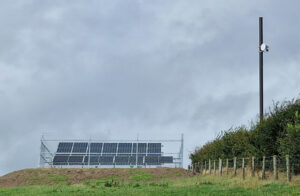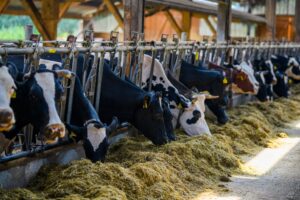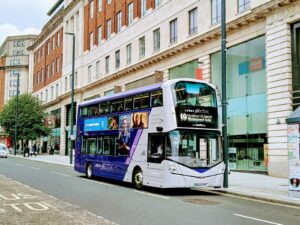BT Group has switched on its first self-powering mobile site, in the Shropshire Hills, where around 70% of its energy needs are expected to be generated by the on-site solar panels and wind turbine.
Identified through an environmental assessment which calculated its potential for generating renewable power, the site will provide reliable and sustainable 4G and 5G connectivity to EE customers in the area.

A combination of solar and wind will provide the energy to charge the batteries which power the on-site mast.
In the event that there is insufficient wind or sun to generate power, and the battery is depleted, a generator powered by Hydrotreated Vegetable Oil (HVO) fuel will provide back-up power to the mast and charge to the batteries, ensuring the site continues to deliver connectivity to customers.
The site is expected to deliver approximately 17,000kWh of wind and solar energy per year and cost savings upwards of £10k. Although BT Group are framing the Shropshire Hills site as a trial, they have already identified ‘hundreds’ of additional locations – primarily in coastal or hilly areas – with the potential to generate power from on-site renewable sources.
Greg McCall, Chief Networks Officer, BT Group, said: “Delivering ubiquitous coverage is critically important in an age where connectivity has never been so central to everyday life, but it absolutely must be done in a responsible and sustainable manner. It’s paramount that we increase the energy-efficiency of our networks, and so we’re really excited about the potential of self-powering sites in enabling us to meet both our sustainability and connectivity ambitions.”
BT Group has an ambition to become a net zero business by 2031 and, to that end, they consider improving the energy efficiency of its networks – which account for around 89% of its total energy consumption – to be a major priority. The Shropshire Hills site follows the roll-out of energy-saving cell-sleep technology across its RAN estate earlier this year.
















Leave a Reply